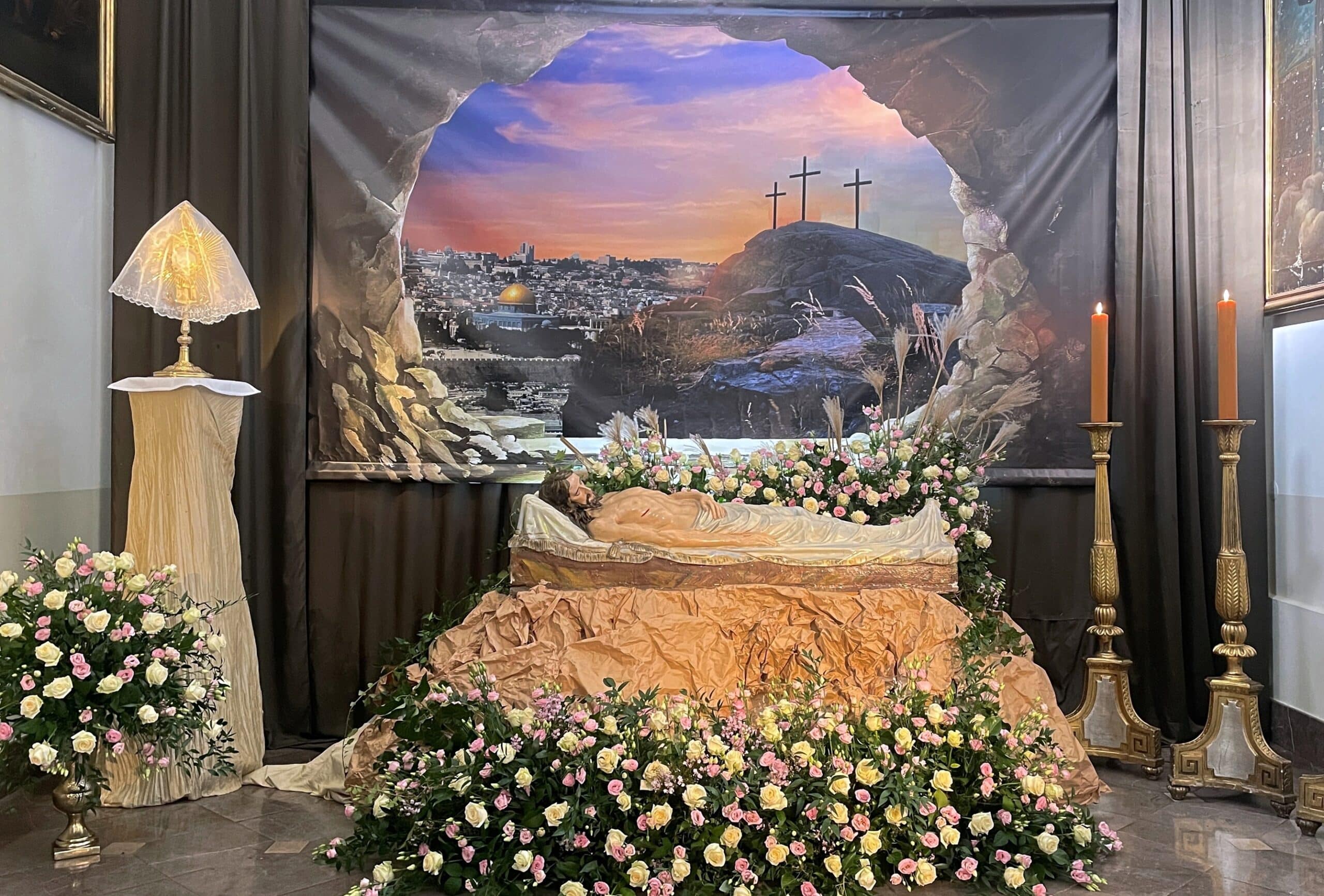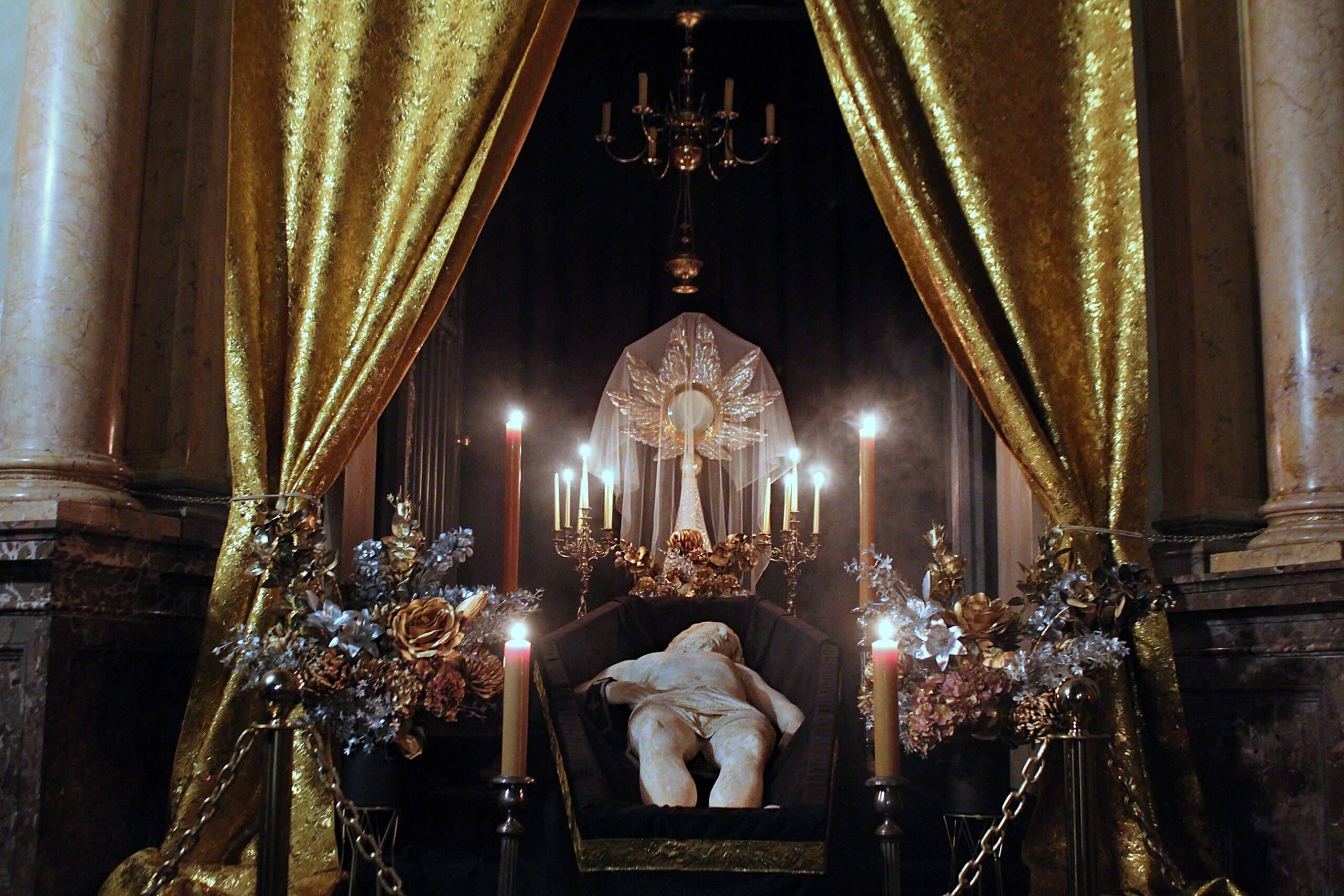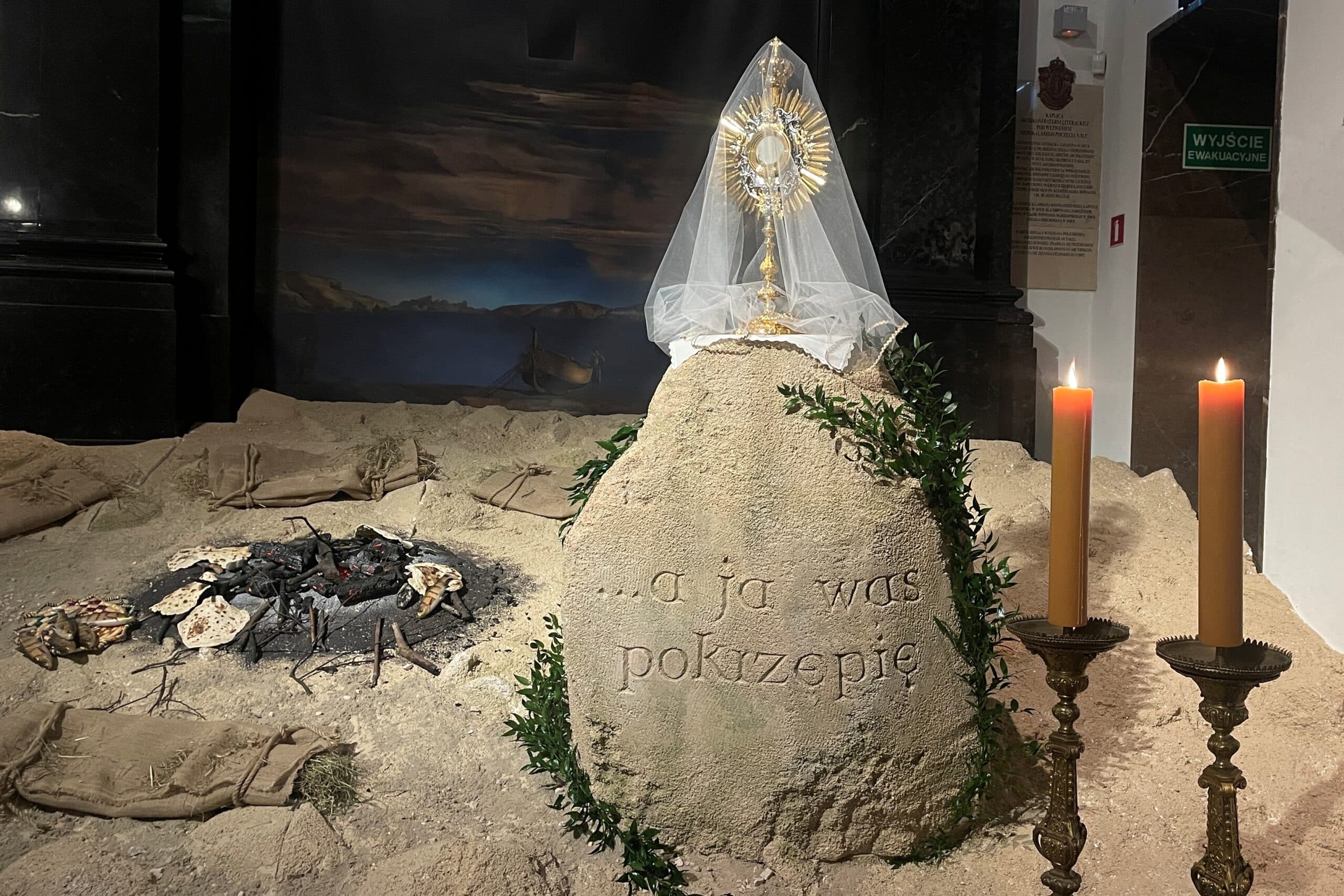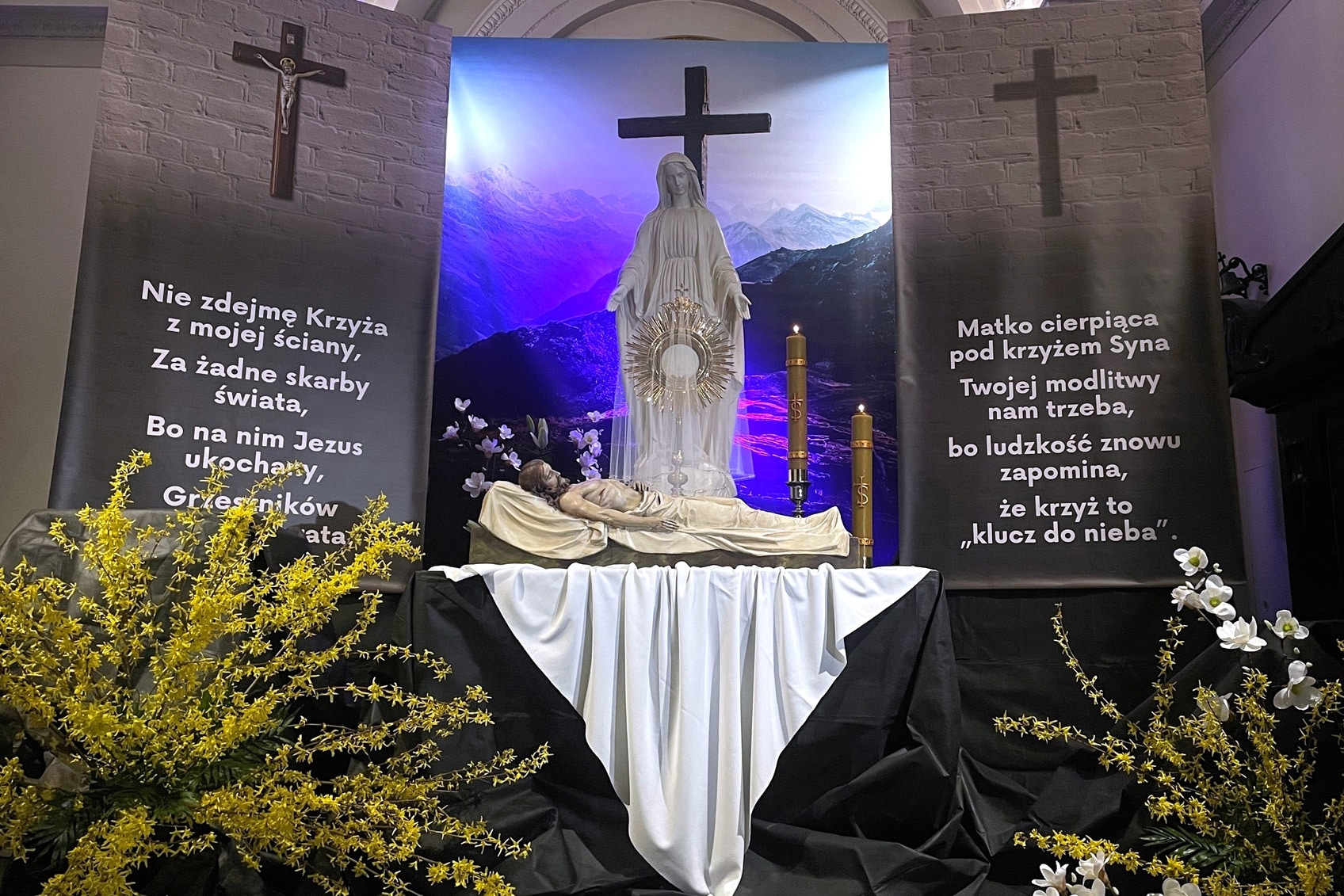“Everywhere Poles live, there is a tradition of building Holy Tombs of the Lord Jesus. Emigrants carried their customs with them. This was our contribution to the spread of the tradition of the Holy Tombs of the Lord Jesus. The custom is important and worthy of sustaining as it is part and parcel of our Polish culture”, was told by Fr. Prof. Marcin Wysocki from the Department Of Greek And Latin Patrology of the Catholic University of Lublin. Since the 18th century, millions of Poles have visited the Tombs of Christ on Good Friday and Holy Saturday.

He observed, “the Tomb of the Lord Jesus is a visual rendition of the place where Christ’s Body was laid after His death. It is an artistic re-enactment of the tomb in contemporary times. It is a space where the Blessed Sacrament is placed to commemorate the entombment of Christ, so that Christians can contemplate His death and await His resurrection”.
In many countries of the world, the custom of building Lord’s Tombs disappeared in the 17th and 18th centuries, with the exception of e.g. Poland, Austria, and southern Germany. “In Poland this tradition took hold and became very important. The Tombs, especially during the Baroque period, resembled whole buildings. They were very rich renditions of the Holy Sepulchre from Jerusalem”, pointed out Fr. Prof. Wysocki.
Where does the tradition of constructing Holy Tombs come from?
As Fr. Prof. Marcin Wysocki pointed out, “We know from the diaries of early pilgrims that efforts were made still in the very first centuries of Christianity to visualise what happened to Christ”. The origins of building the Tombs of Christ go back to fourth-century Jerusalem. “It was then that Empress Helena, mother of Emperor Constantine, went on a pilgrimage to the Holy Land and discovered places associated with the life of Christ. Among other things, she found the holy cross”, recalled the researcher.

Constantine had the first Christian basilica built on the site of Jesus’ death on Calvary. He named it the Church of the Resurrection, which is still a telling move today. “We often treat Easter in the perspective of passion, death and the tomb, but the Tomb of Christ is not the ending but actually the beginning. It is a symbol of life and victory over death and sin. This tomb is empty. It is nothing negative” – he affirmed. “The tomb of Christ is the place where Jesus was laid, but he was entombed there to rise from the dead”, added Fr. Prof. Marcin Wysocki.
Jerusalem is far away, the Holy Tomb is close at hand
However, not everyone was able to make a pilgrimage to the Holy Land, especially after the failures of the Crusades when Jerusalem fell under Muslim rule. Around the ninth century, the custom of building the Lord’s Tombs patterned on the Holy Sepulchre in Jerusalem spread across medieval Europe, which was struggling with various problems. “We know that the first images of the Tomb were created at that time in order to raise Christians’ awareness of this event and commemorate it, and this is how the Tomb became present in other places” – emphasised the researcher from the Catholic University of Lublin.

A representation of the Holy Sepulchre became an important part of the liturgy of Good Friday and Holy Saturday. As Fr. Prof. Wysocki pointed out, “initially only a cross wrapped in linen was laid in the Tombs, which was pressed with a stone”, symbolising the stone with which Jesus’ tomb was sealed. A little later, a consecrated Host was also placed in the Tombs. In modern times, both the cross and the Blessed Sacrament are typically displayed in the Lord’s Tombs.
Holy Tombs as the Polish phenomenon
The custom of building the Tomb of the Lord Jesus was brought to Poland by the Order of the Knights of the Holy Sepulchre in Jerusalem, who had to leave the Holy Land after the failure of the Crusades.
From the very beginning, in the Polish lands “the Holy Tomb was full of meaning, not only religious, but also social and related to the state”. As Fr. Prof. Marcin Wysocki pointed out, the Lord’s Tombs “during the period of Poland’s partitions often included elements related to the Polish statehood, just like they did during the German occupation and communism. They were often expressions of dissent, and this is still the case to some extent today”.

“Visitations of the Holy Tombs in different churches is a custom very popular in Warsaw, also passed on to other regions. We have testimonies that this was very popular already in the 18th century. The Tombs of the Lord were particularly lavish along the so-called Royal Route in Warsaw”, added Fr. Prof. Wysocki. Even King Stanislaus Augustus Poniatowski was among the visitors.
In the 17th century, the custom of posting guards of honour at the Tomb of Christ emerged in Poland. “Various military and paramilitary formations were involved, and more recently this has included firefighters” – summarised Fr. Prof. Marcin Wysocki from the Department of Greek And Latin Patrology of the Catholic University of Lublin.










